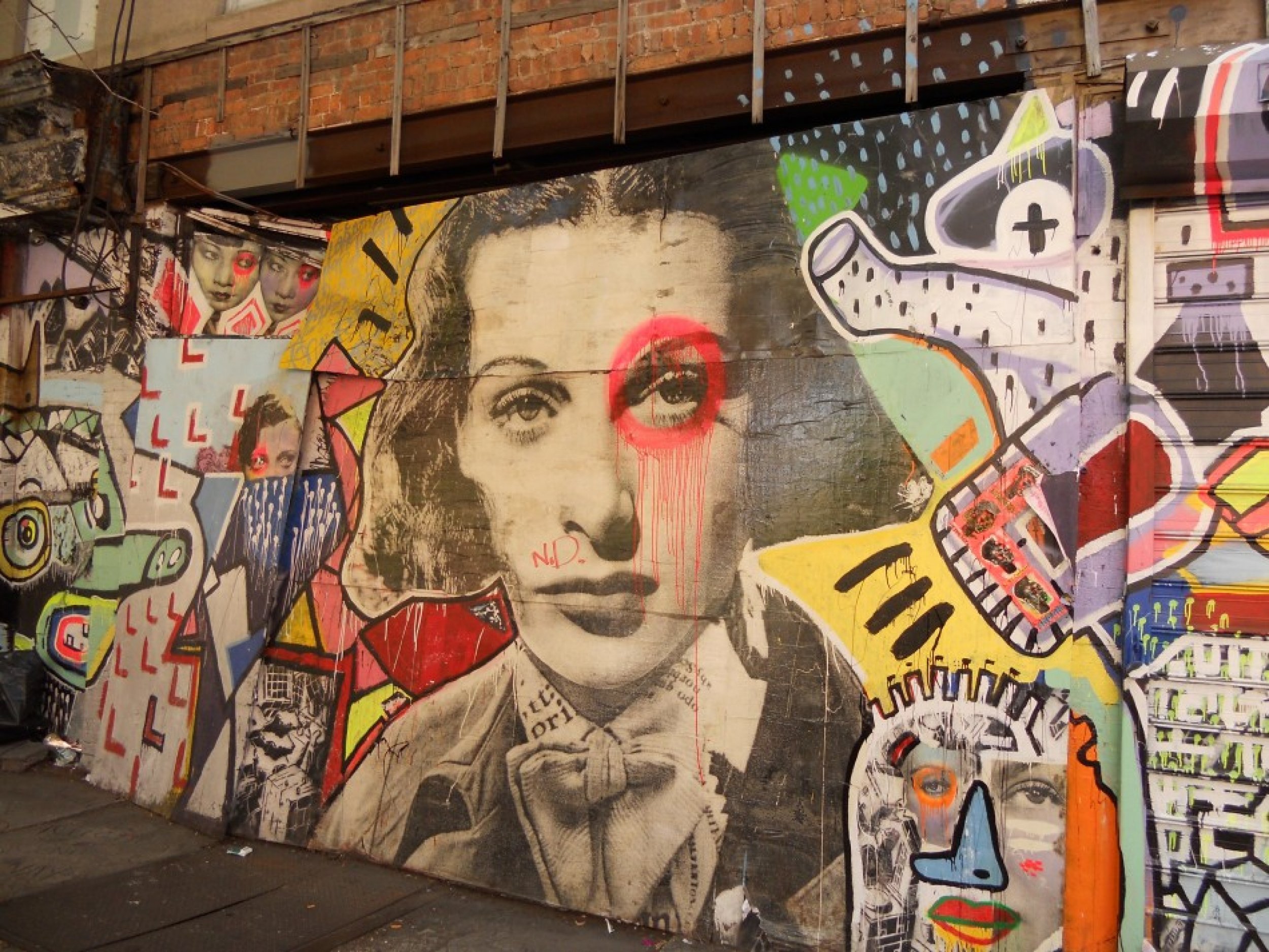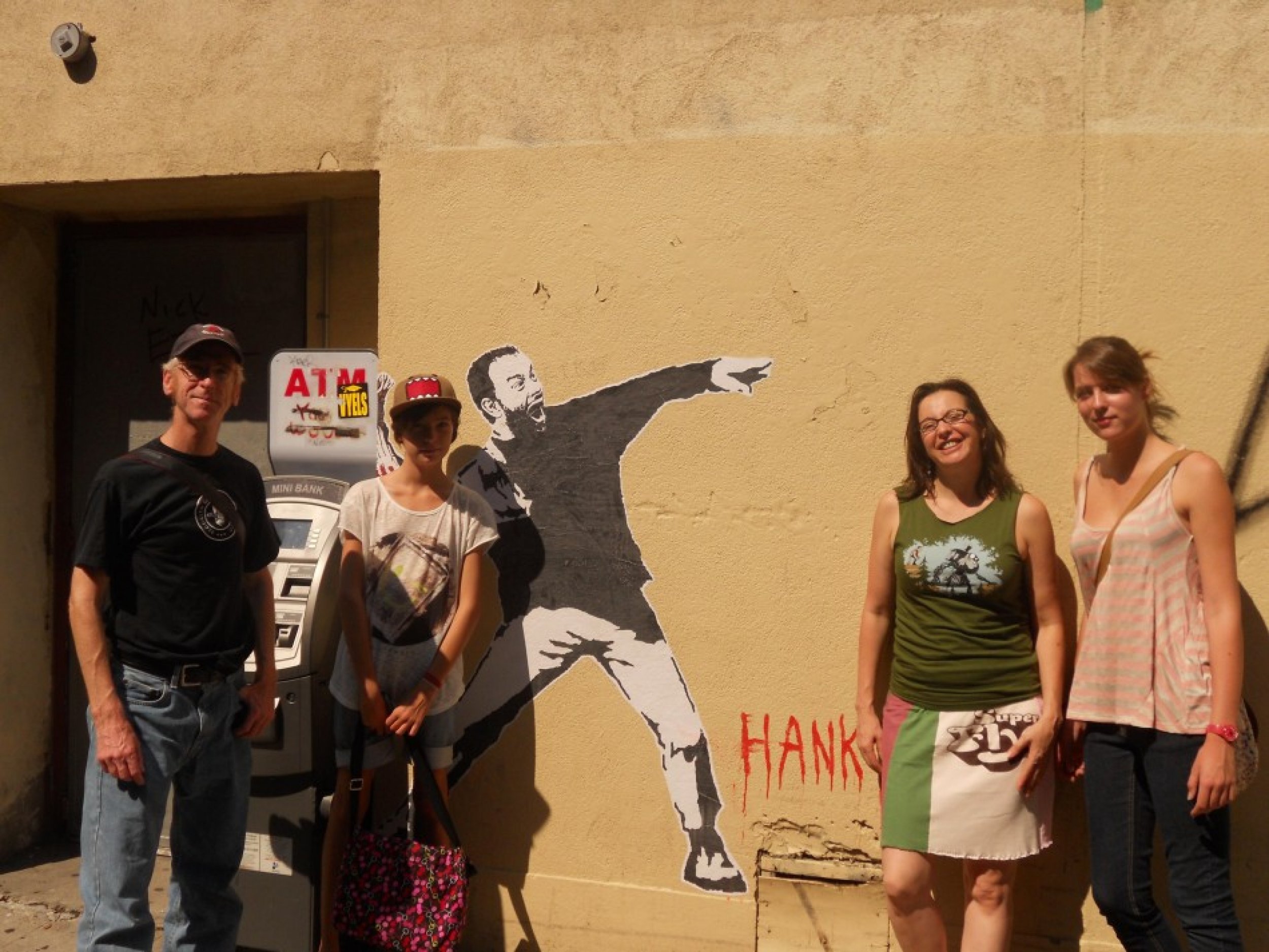Crimes of New York: Graffiti of the City [Slideshow and Pictures]
Column
To some it is seen as defacement of property that needs to be eradicated immediately. Others are fearful of it, believing it is the calling card of gangs around New York City. Still, many view it as a work of art to be revered and on public display.
Whatever it is considered, graffiti has become a major part of urban and inner-city culture. And it has been a part of the city scene since, at least, the ancient ash-preserved city of Pompeii. What draws people throughout history to the act of making graffiti?
Check any corner on the streets of Manhattan, especially any abandoned building, and there may be some evidence a graffiti artist left his tag, leaving his name and creation for the world to see. Some call them vandals, but graffiti artists really are looking for fame from one's peers, according to Dr. Gregory Snyder. Snyder is a professor of sociology at Baruch College. He has written extensively on graffiti in New York and its impact on the urban culture in his book Graffiti Lives: Beyond the Tag in New York's Urban Underground.
Snyder remarked that to a graffiti artist, saturation trumps style, meaning the amount of times a graffiti artist will imprint their name around the city, the more important their name will become.
Egotistical and Personal
Gabriel Schoenberg is a graffiti expert and a self-proclaimed urban historian. On a daily basis, he gives tours around the city, taking individuals on graffiti tours. According to his website, grafftours.com, his tours teaches people history, techniques, slang, and visuals needed to understand graffiti in New York. He has immersed himself in the underground subculture of graffiti since living in Buenos Aires.
Schoenberg concurs with Dr. Snyder saying that graffiti is an egotistical and personal form of expression. He says graffiti artists get a certain sense of pride by seeing their pseudonyms, or tag, on walls, subway cars, and hard to reach areas.
They get a real sneaky thrill for putting up graffiti, said Dr. Garot. Dr. Garot is currently a professor of sociology at John Jay College. He has conducted extensive studies on gang culture and graffiti in Los Angeles. He recently wrote a book about gang life entitled Who You Claim: Performing Gang Identity in School and on the Streets. It is very narcissistic.
Graffiti, Schoenberg believes, is also a political tool. He said it is often used by disenfranchised and poorer people to make statements about their current situation because of the permanence of graffiti. He cited gentrification as an example. As neighborhoods are becoming more and more diverse, he said, natives are almost being forced out of their homes. Schoenberg said graffiti becomes a way to leave their permanent mark as they move further and further uptown.
Schoenberg said that, while graffiti can trace its origins back to cave paintings, it became popular in the 1960s, when a young man received the nickname Cornbread. He began to write this nickname all along the streets of Philadelphia. Graffiti immediately took hold of Philadelphia and spread to other cities.
Phenomenon of the 80s
As time went on, graffiti began to develop. Graffiti artists began challenging each other to explore the city, to get to the highest point, said Synder. Graffiti artists began stylizing their work, making their letters more bubbly.
In the 80s, subway cars became canvases for crazy pieces, explained Schoenberg. Graffiti became a phenomenon. The streets and subways became riddled with graffiti. Residents could not go down one block without seeing a spray-painted tag. Schoenberg said that graffiti artist began using burners, which are crazy pieces.
Ed Koch associated graffiti with any negative term, said Schoenberg. Mayor Ed Koch instituted an anti-vandal squad with the purpose of getting graffiti artists off the street. Koch, his successors, and police chiefs began employing the use of broken windows theory and CompStat, which states that attacking little crimes in high crime areas, will decrease violent crimes. Although since its implication, violent crimes have decreased, both Snyder and Schoenberg disagree that graffiti will leads to more crimes.
I think the best way to control is to put paint resistant sidings on the trains, said Garot. A lot say they wouldn't be doing if it wasn't illegal.
Misconception with Gang Warfare
There is no doubt that gangs in the various cities across the United States use graffiti to mark their terrority. Walking around the streets of New York, it is definitely possible to see gang tags. However, Schoenberg said there is a misconception that all graffiti is associated with gangs. Schoenberg speculated less than 5 percent of all gang graffiti is associated with gang activity. Synder concurs with Schoenberg's belief, although he did not have exact statistics. Synder conducted studies about graffiti in high crime areas.
The amount of graffiti in SoHo is a lot greater in Prospect Heights, said Synder. Prospect Heights has a higher crime rate than SoHo, said Synder, therefore it was interesting to understand why there would more crime in areas with less graffiti.
You have to write in places where people will see. Since SoHo is traditionally a place of artistry, there will be more graffiti there, explained Synder. I feel safer around graffiti.
Schoenberg said that the average pedestrian does not have the right eye or the experience to tell when there are certainly more public expressions that gangs tagging, said Schoenberg. He explained that gang writing is usually simply letters and numbers. However, graffiti artists not associated with gangs will write more stylistically, to try to attract attention. Gangs use graffiti in order to mark their territory and warn rival gangs.
The more hardcore gang members were dismissive of tagging graffiti artists, said Garot. He also believes there is not a connection between active graffiti artists and crews, and violent gangs.
However, Snyder does not advocate defacing public property. Still, there is something, in his opinion, to be learned from graffiti.
The stigma associated with graffiti writing is that it is clearly vandalism, he said. I think that it is extremely interesting and fascinating.
Graffiti Sites and Blogs
Here are a list of graffiti blogs and sites
3. Spray Beast
4. Revok 1
5. Fresh Paint NYC
8. Graffutrism
9. Graff Tours
To report problems or to leave feedback about this article, e-mail: m.billera@IBTimes.com. Follow Michael Billera on Twitter.





© Copyright IBTimes 2024. All rights reserved.











